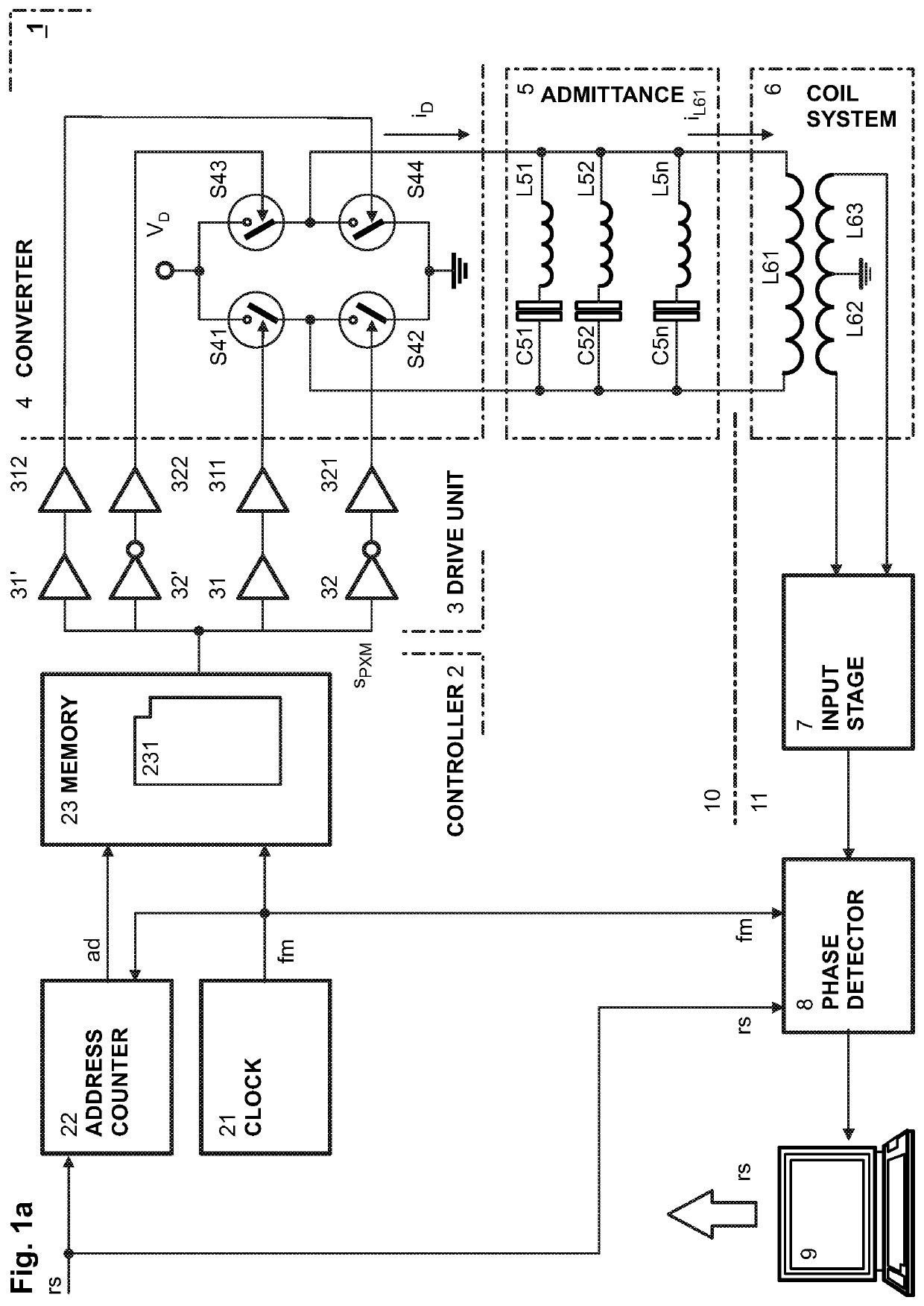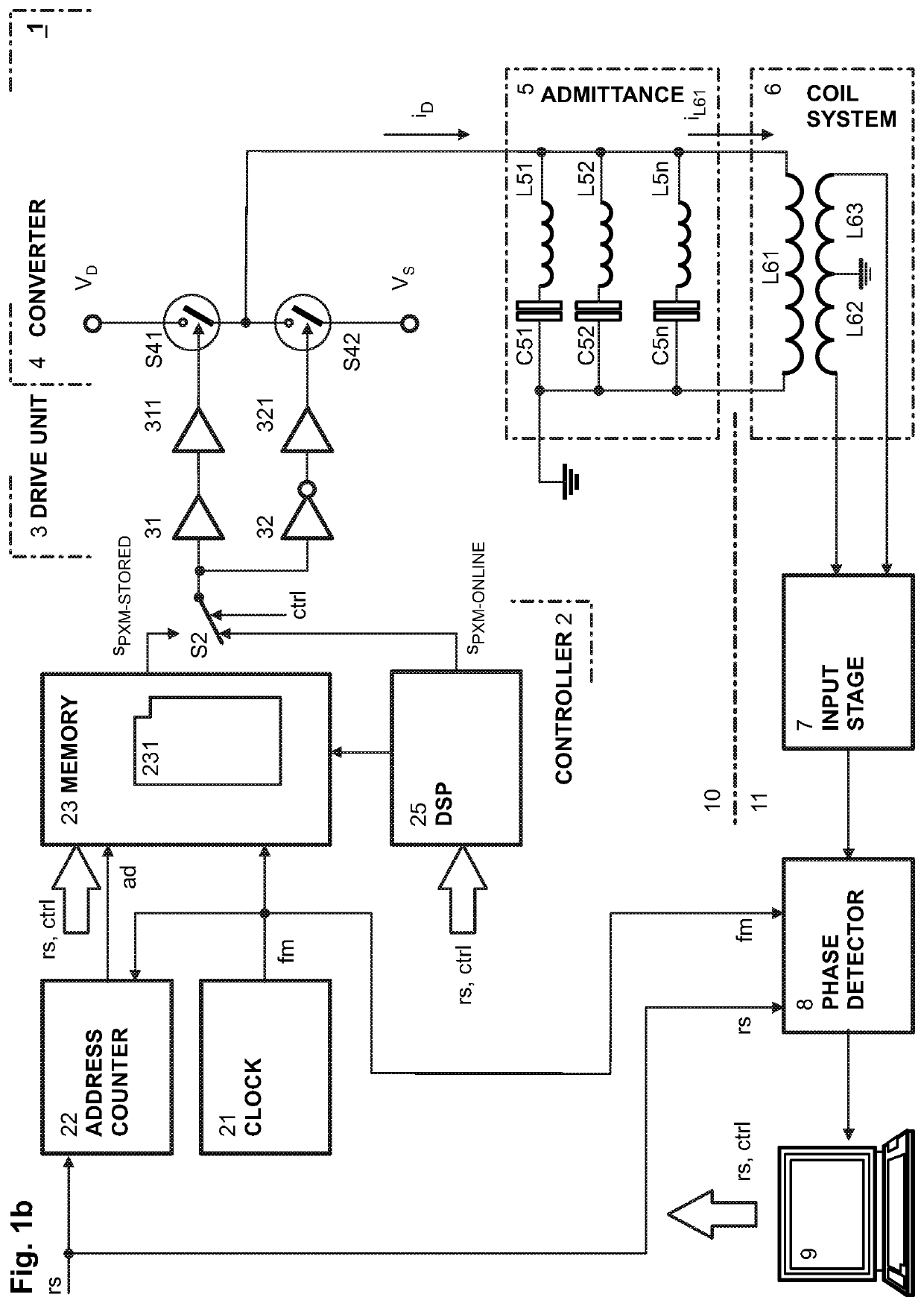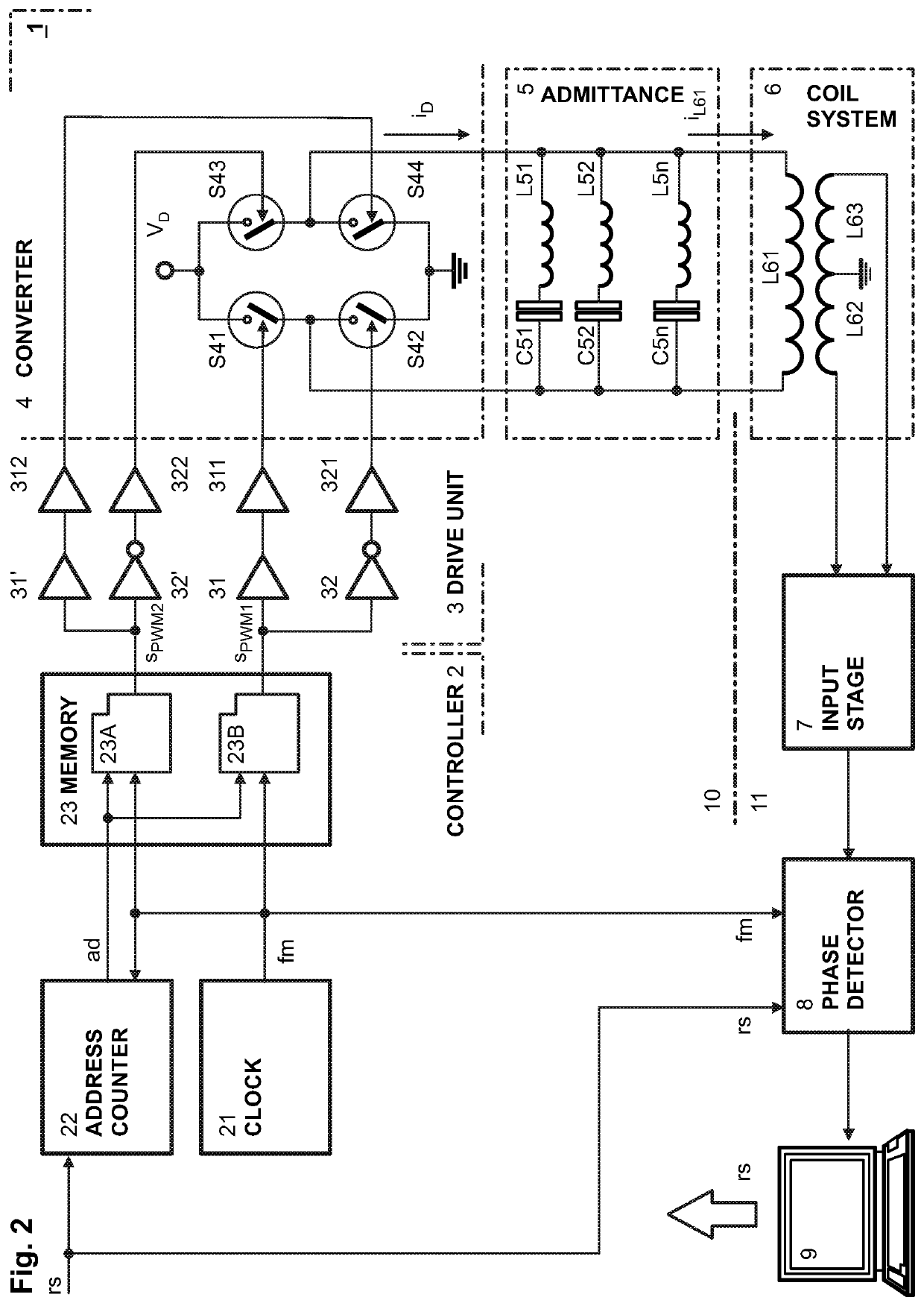Method for operating a multi-frequency metal detector and multi-frequency metal detector
a multi-frequency metal detector and metal detector technology, applied in the direction of instruments, measurement devices, electrically powered circuit arrangements, etc., can solve the problems of large cost, large number of relatively high energy harmonics, and inability to achieve the desired results of other metal contaminants at the same frequency, so as to achieve the effect of reducing cost, improving efficiency, and being constructively simpl
- Summary
- Abstract
- Description
- Claims
- Application Information
AI Technical Summary
Benefits of technology
Problems solved by technology
Method used
Image
Examples
Embodiment Construction
[0047]FIG. 1a shows a first embodiment of an inventive metal detector 1 that comprises a transmitter unit 10 and a receiver unit 11 and a balanced coil system 6 with a drive coil L61 connected to the output of the transmitter unit 10 and two detection coils L62 and L63 connected on one end to ground potential and with the other end to an input stage 7 of the receiver unit 11. In the input stage 7 the input signal is typically amplified and filtered and then forwarded to a phase detector 8. The phase detector 8 allows distinguishing between the phases of the signal components of different origin and obtaining information about the observed product and contaminants, if present. A typical phase detector, e.g. a frequency mixer or analogue multiplier circuit, generates two independent voltage signals which represent the in-phase and quadrature component provided by the input stage 7, and a reference signal fm provided by the transmitter unit 10. The output signal of the phase detector 8...
PUM
| Property | Measurement | Unit |
|---|---|---|
| operating frequency | aaaaa | aaaaa |
| electromagnetic field | aaaaa | aaaaa |
| magnetic field | aaaaa | aaaaa |
Abstract
Description
Claims
Application Information
 Login to View More
Login to View More - R&D
- Intellectual Property
- Life Sciences
- Materials
- Tech Scout
- Unparalleled Data Quality
- Higher Quality Content
- 60% Fewer Hallucinations
Browse by: Latest US Patents, China's latest patents, Technical Efficacy Thesaurus, Application Domain, Technology Topic, Popular Technical Reports.
© 2025 PatSnap. All rights reserved.Legal|Privacy policy|Modern Slavery Act Transparency Statement|Sitemap|About US| Contact US: help@patsnap.com



